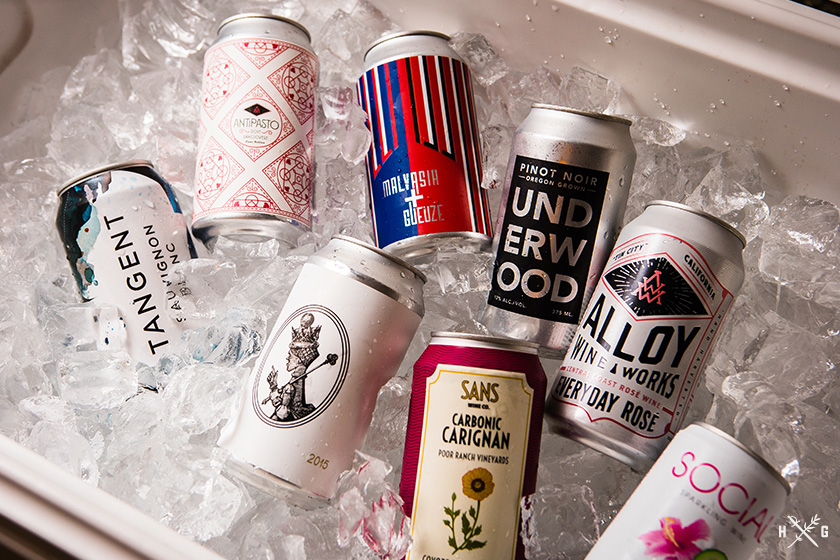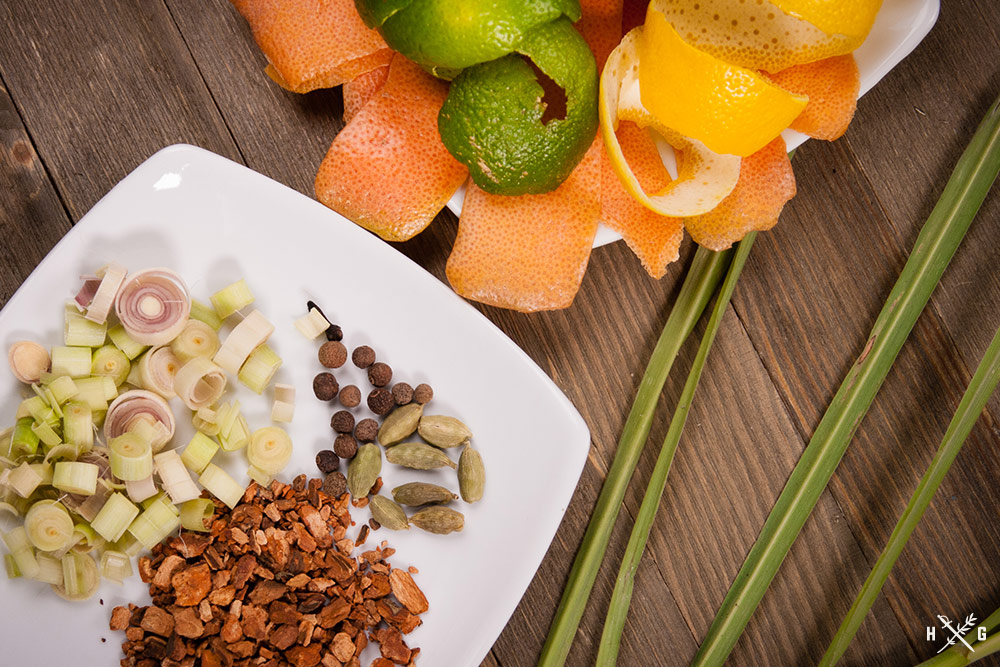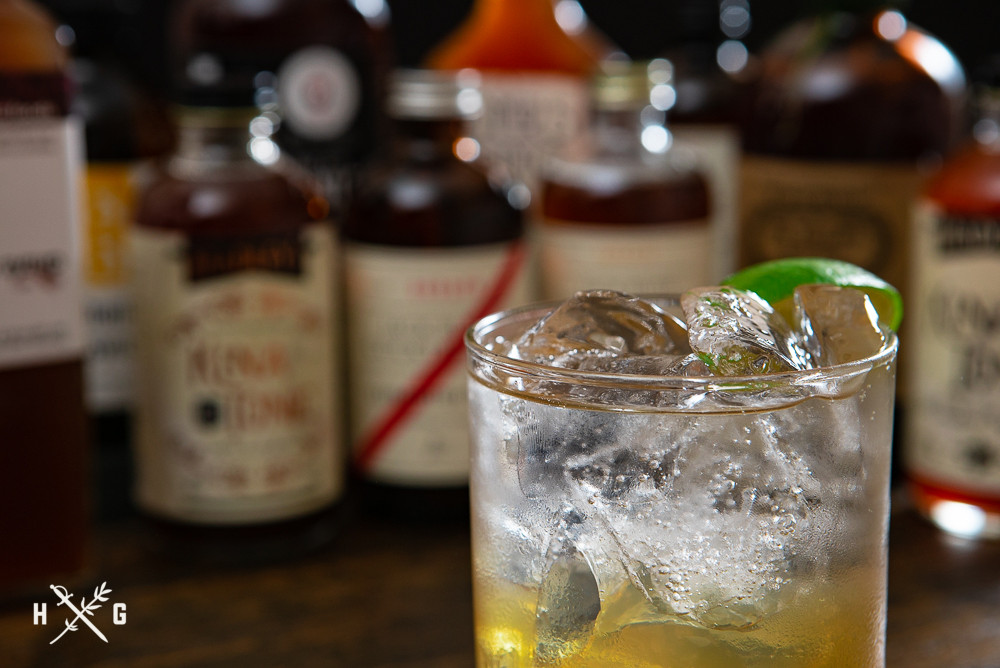It’s easy to conjure the mental image of the pretentious wine snob feverishly swirling the glass, then taking a sip with an outstretched pinky.Most of us don’t fall into that category, but we might snub our noses at the concept of canned wine. It’s as if every beverage from wine to coffee to cocktails must go through a cycle of birth and rebirth, with commoditization happening in between. But does commoditization mean deprecating compromise?
To properly vet canned wine, I enlisted the help of two of Tulsa’s Level II sommeliers, Jared Jordan and Lesley Nelson. To achieve their Level II Sommelier certification, Jordan and Nelson had to pass an extensive three-part exam, which included blind tasting, wine theory, and service elements.
Jordan has over 10 years of experience in food and beverage and is currently the general manager of The Summit Club. Nelson has spent countless hours behind many of Tulsa’s most popular restaurants and bars, the latest being Amelia’s, where she is a bartender.
Over the course of two hours, they blind taste-tested 10 canned wines. Our overall goal was to answer two basic questions. First: Does canned wine taste different than bottled wine? And second: What’s your resulting overall opinion of canned wine?
Canned wine is about convenience from the cooler, not proper stemware and decanters. This convenience also tends to come at a slightly higher price, but it’s worth noting that a single can of wine is the equivalent of half a bottle or roughly two glasses.
To establish a baseline for comparison between canned and bottled, Jordan and Nelson conducted a side-by-side tasting of The White Queen 2015 Chardonnay. This Sonoma Chardonnay was the second most expensive wine tasted (roughly $13 per can and $23 per bottle). For this test, they were informed that they were being served the same Chardonnay in both canned and bottled versions.
Immediately noticeable was the difference in color, likely due to the bottle being exposed to more light and oxygen, as opposed to the can, which is hermetically sealed. The somms also noticed differences in aroma and taste significant enough for one to assume they were two completely different wines. Both enjoyed the bottled version and felt that the canned counterpart “lost its soul”—the appealing complexities and fruit nuances were absent.
The remaining nine cans for the tasting were selected as a general representation of whites, rosés, and reds, with two of them being slight curveballs for a little excitement. The selection included Porch Pounder Chardonnay ($6), Tangent Sauvignon Blanc ($7), Alloy Everyday Rosé ($8), Dark Horse Rosé ($5), Social Hibiscus Cucumber Sparkling Sake ($3), Underwood Pinot Noir ($6), Alloy Antipasto Sangiovese ($9), Sans Wine Co. Carbonic Carignan ($15) and Alloy Malvasia Gueuze ($8).
After tasting and discussing the lineup, it was easy to spot the overall trend. While no specific wine was terrible, they all contained a lingering chemical or metallic note, which Jordan and Nelson both conceded that the casual drinker was not likely to notice. It is also worth noting that those unwanted flavors were less noticeable in the whites, which contained more citrus-forward notes.
The two wines that got a definitive thumbs up were the Tangent Sauvignon Blanc and the Dark Horse Rosé. When it came to the reds, the Alloy Antipasto Sangiovese and Sans Wine Co. Carbonic Carignon were preferred, but their comparatively high price points make them difficult to recommend.
As for the overall winner, there is some debate as to whether it belonged in the tasting at all. The Alloy Malvasia Gueuze is a collaboration between Alloy Wine Works and Tulsa-based brewery American Solera. It’s a blend of California Malvasia grapes and a gueuze (a spontaneously fermented beer that’s a blend of barrel-aged beers ranging from 1-3 years old).
This can was more akin to a traditional sour beer than any sort of wine with notes of funky citrus and delightfully tart notes that left both Jordan and Nelson wanting more. In fact, it’s the only one that didn’t make it into the customary spit bucket.
Overall, both Jordan and Nelson agree that canned wine has its place and that they’d both enjoy either of their top picks while on the lake or at an outdoor event without thinking twice. However, canned wines have a ways to go before they can directly match the quality found in their age-old bottled counterparts.
(This article was originally published in the July 2018 A Issue of The Tulsa Voice.)
I created The Humble Garnish because I’m passionate about cocktails. Occasionally, I am provided with products for review or other perks. Many product links on this site are affiliate links that give me a very small kickback, and costs the buyer nothing extra. For example, as an Amazon Associate, I earn from qualifying purchases after a link leading to Amazon is clicked. Other links may earn me affiliate commissions as well. This helps offset the cost of creating content for the site – things like camera gear, software, alcohol, glassware. I have at times accepted and at other times declined free products. I promote what I love and use, and rarely will write about a product that I don’t appreciate or own. If I don’t like a product or service, I often simply choose not to write about it.
– Andrew



